The best free Android apps of 2023: the best apps in the Google Play Store
The best free Android apps, tested and ranked
Our favorite free Android apps for improving productivity, whether through to-do lists, focus timers or other tools.
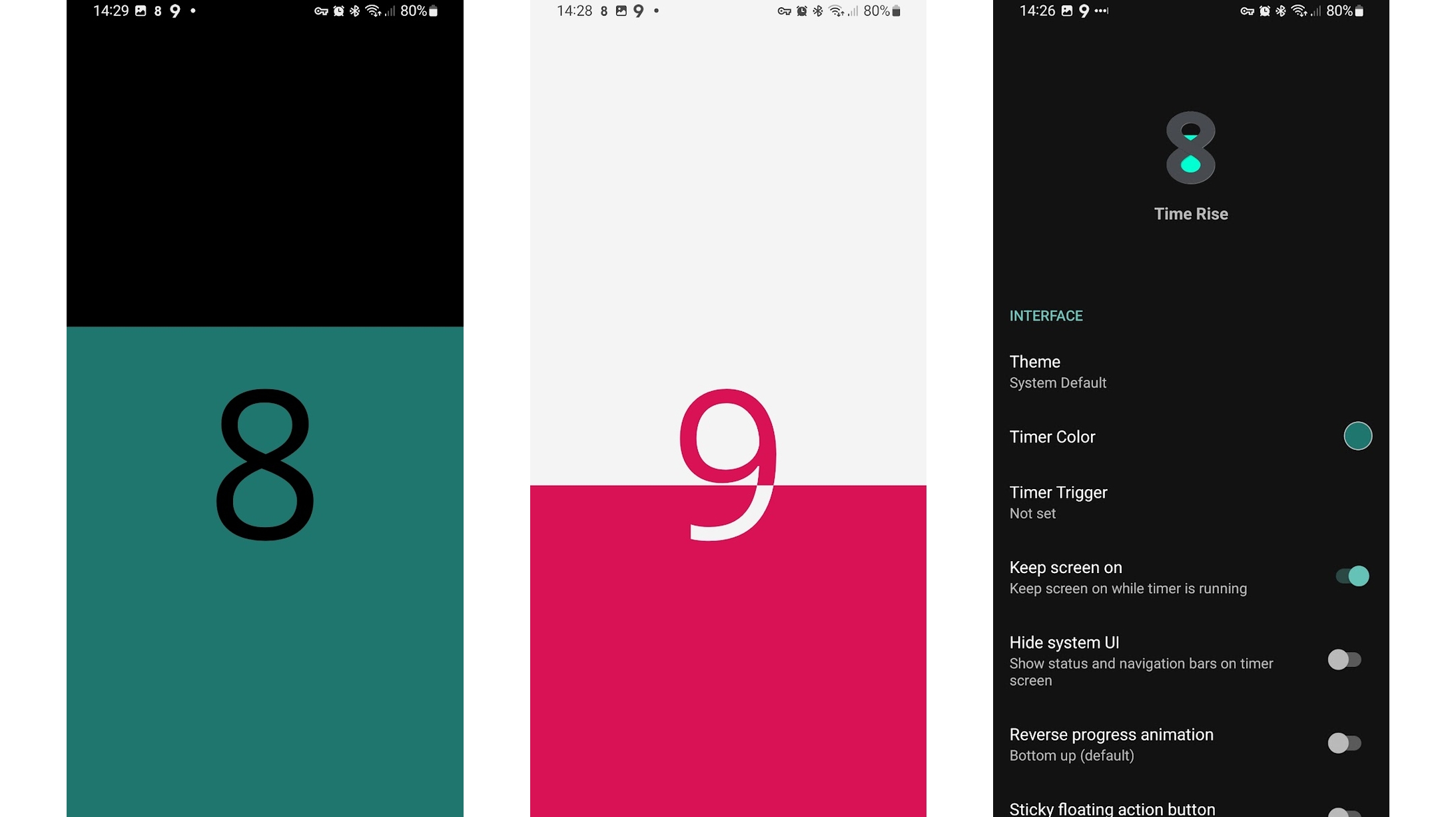
Time Rise
Why you can trust TechRadar
There’s very little to say about Time Rise as it’s a very simple app, but one that some people are sure to love.
Time Rise is essentially a digital sand time. You can set how long you want on the timer, then turn your phone upside down to start it. As it does, the large numbers in the center of the display will count down, and the screen will slowly fill with color – like a sand timer does with sand. If you turn your phone sideways the timer will pause.
That’s it really, but you can use a light or dark theme and customize the color of the numbers and the shade that gradually fills up the display. There are also a few other settings you can tweak, such as hiding the system UI and reversing the progress animation.
But ultimately, this is a quite simple timer. However its attractive design, ease of use, and big, bold text, make it an appealing option if a timer is all you need.
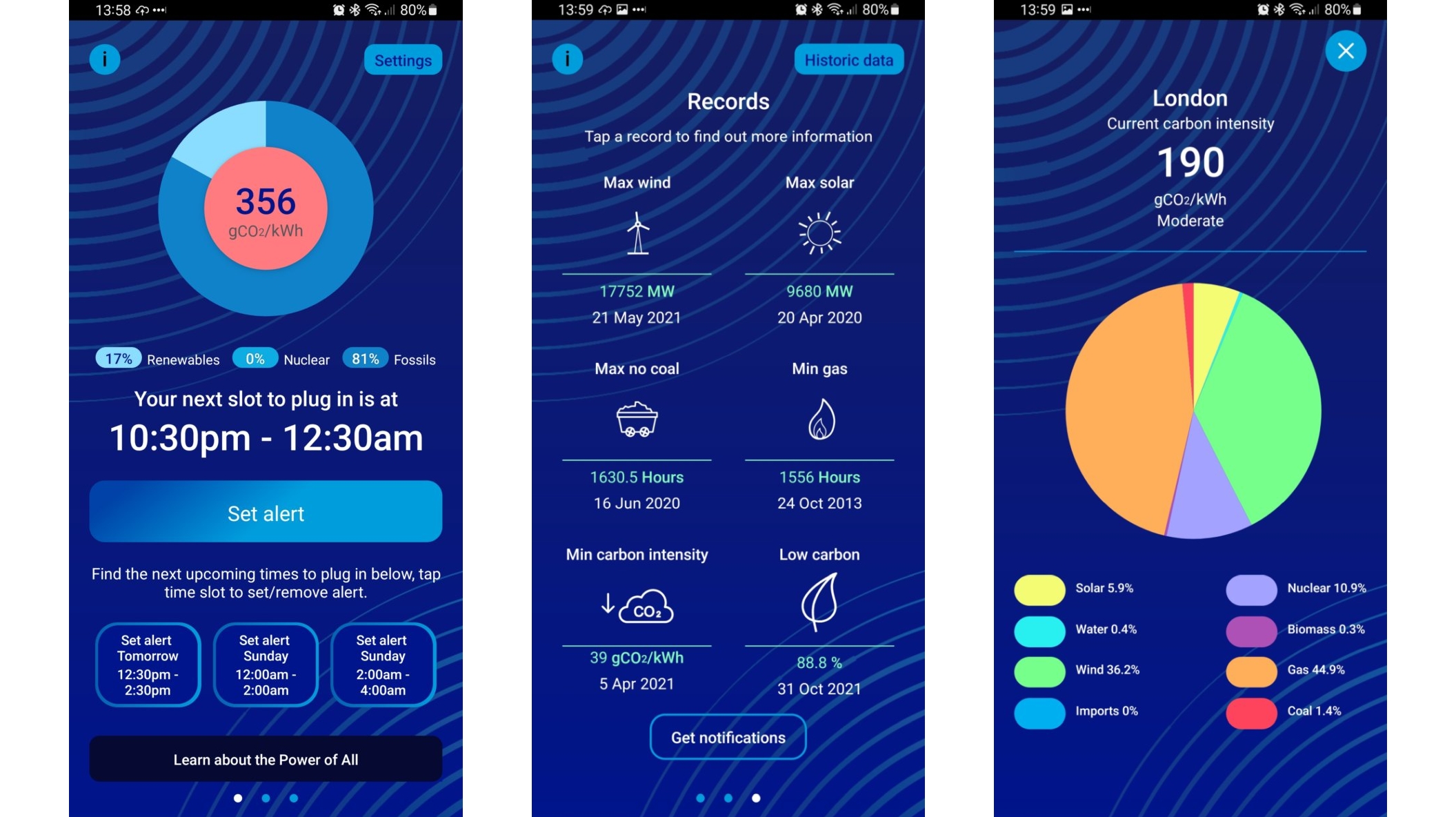
WhenToPlugIn
This one is just for the UK, but we’d love to see similar apps globally. WhenToPlugIn tells you the cleanest times of day to use electricity, based on where in the UK you are.
By ‘cleanest’, we mean the times when the most zero carbon sources are being used. These include renewables like solar and wind power, as well as nuclear power. On the main screen you can see the next ‘clean’ slot and several other subsequent ones, and the app lets you set a reminder for any of those times, so you’ll remember to make the most of them for plugging things in and switching them on.
Obviously, you won’t be able to stick purely to these clean energy times, but for things that you can schedule – like running the dishwasher or plugging in an electric vehicle – it’s a useful tool.
The WhenToPlugIn app also provides all sorts of insights and charts into the amounts and types of energy being used, which can make for an interesting read whether you want to help the zero carbon push or not.
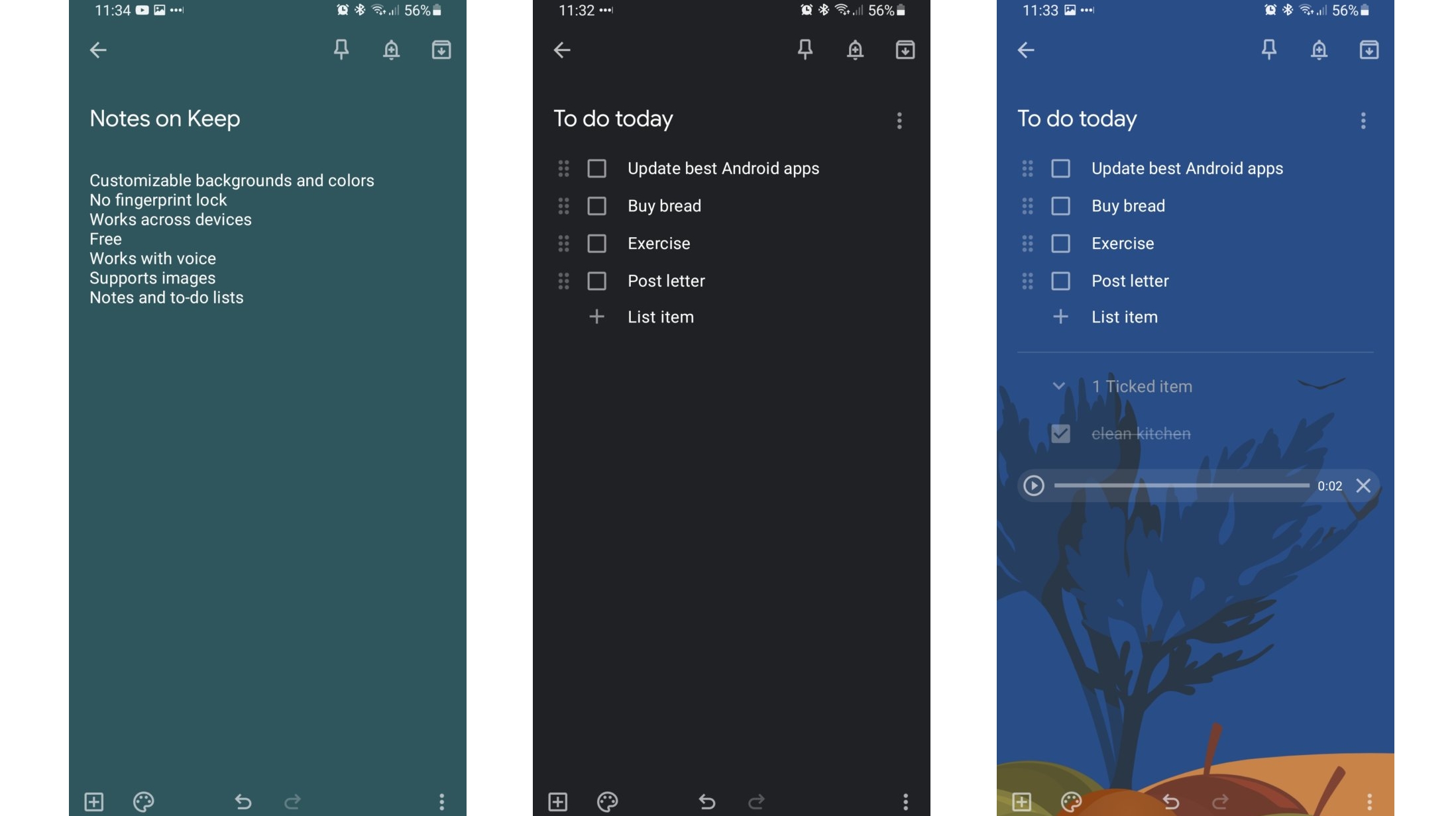
Google Keep
Google Keep isn’t new, but it is one of the best note-taking and list-making apps around, rivalling the likes of Evernote.
In fact, if you don’t want to pay a subscription then Google Keep arguably has the edge over Evernote, as some features that come at a premium on that are free here – such as the ability to make and sync notes across unlimited devices.
You can also share and collaborate on notes, color code them, add photos, record voice memos (which Keep will transcribe), set location based reminders, add labels, and access Google Keep on most types of devices, including Android and Apple phones and tablets, computers, and even Wear OS smartwatches.
Aesthetically we’re not huge fans of it, and we’d really like to see the option to password or fingerprint protect either individual notes or the entire app, but for the most part Google Keep is a feature-packed app that’s quick and easy to use, and it’s completely free.
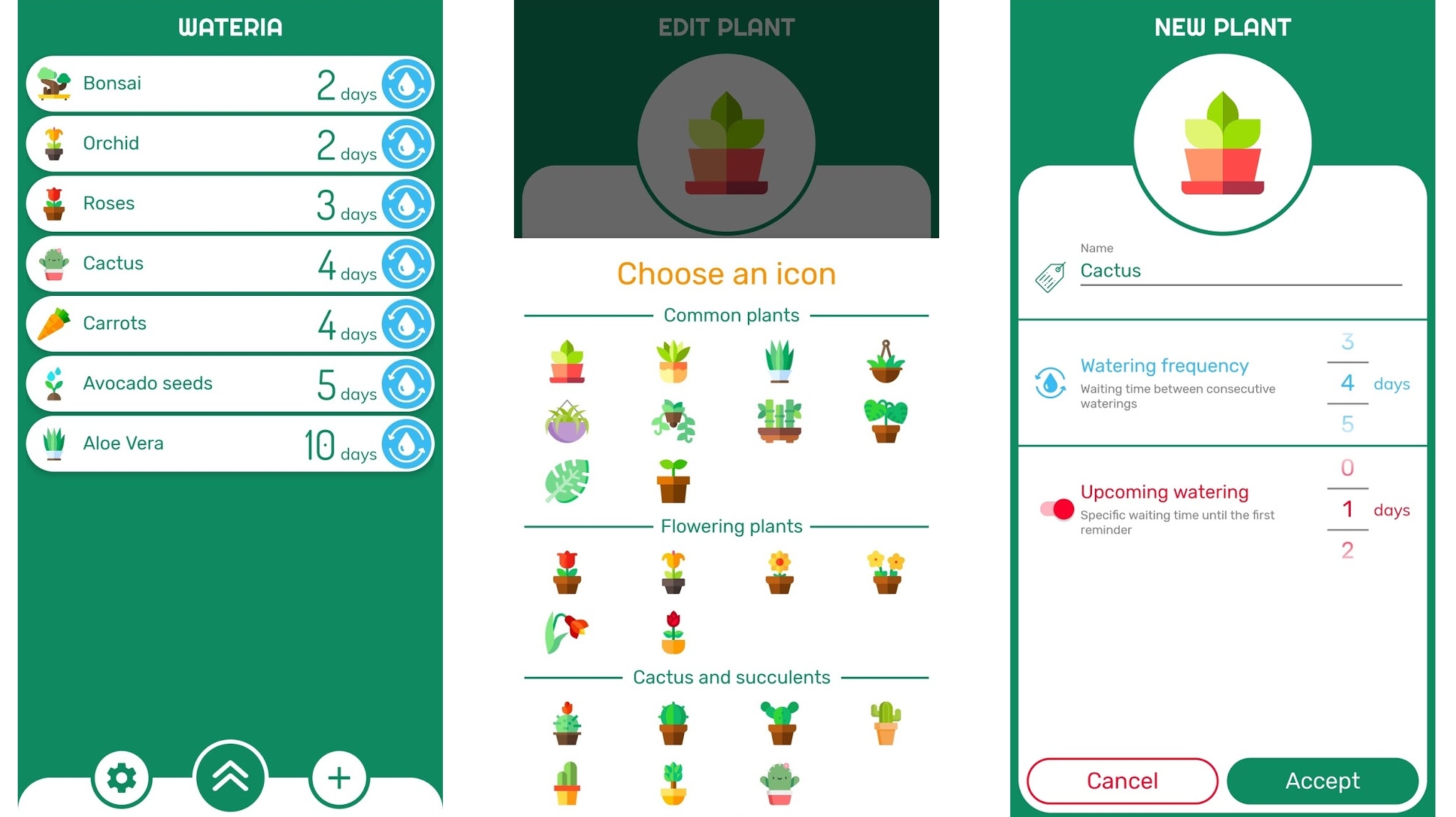
Wateria
Wateria is a simple app that could help you keep your plants alive – especially if you struggle to remember to water them.
It’s a reminder app focused purely on reminding you to water your plants. Simply enter the type of plant, how frequently you want to water it, and how soon you want the first reminder to appear, and Wateria will prod you every time the plant is due to be watered. Tap a button in the app to say you’ve watered it, and the timer will reset.
So it’s a bit more useful for this than a simple calendar reminder, since the water schedule doesn’t reset until you’ve actually watered the plant. Wateria is especially useful if you have multiple plants that all need watering on different schedules, as you can easily keep track of them all in one place.
The app has a cute design, letting you choose from a range of different cartoony images to represent each of your plants, and as well as watering reminders it can show you daily plant care tips. But water reminders are the focus, and it does those very well.
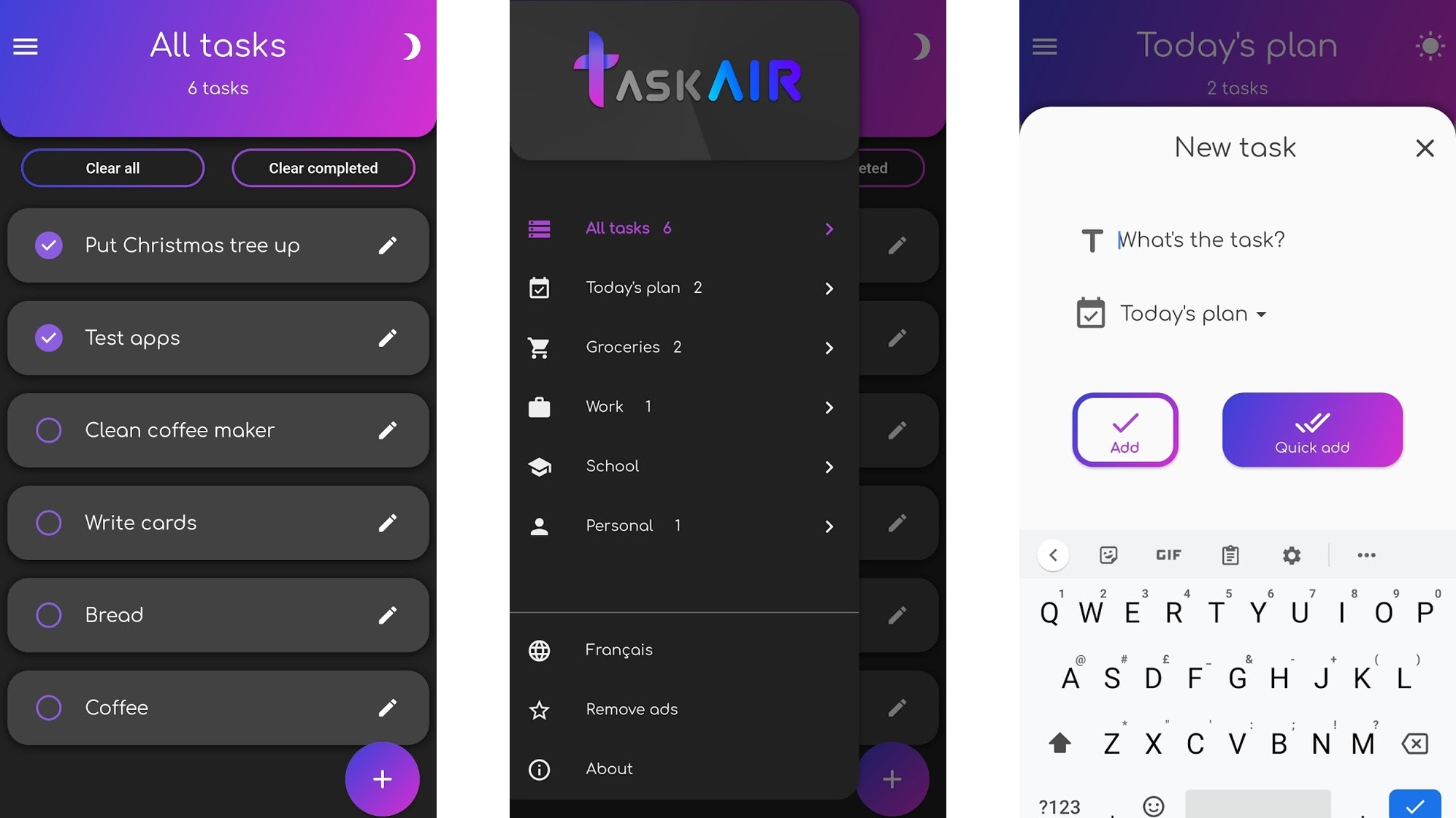
Task Air
There are loads of to-do list apps available for Android, but whether it’s through a clunky interface or an ugly design, a lot of them aren’t that satisfying to use. Task Air though is in our opinion.
Visually it’s great, with a minimalist, clean look that’s stylish without being busy. Navigating the app is similarly slick, with a few different task categories you can switch between with a tap (such as work, personal, groceries, or today). Or you can choose to view all your tasks on one screen.
Adding new tasks is also quick and easy, and you can choose whether to continue displaying completed tasks (with a tick beside them) or not. There are also both light and dark themes, and there’s no need to set up an account.
Task Air is also free – though you can optionally pay a one-off fee to remove adverts. If there’s a downside, it’s that Task Air is an offline app. That can be a good thing, as it means you don’t need an internet connection to use it, but it also means you can’t back up your to-do list or access it from multiple devices.
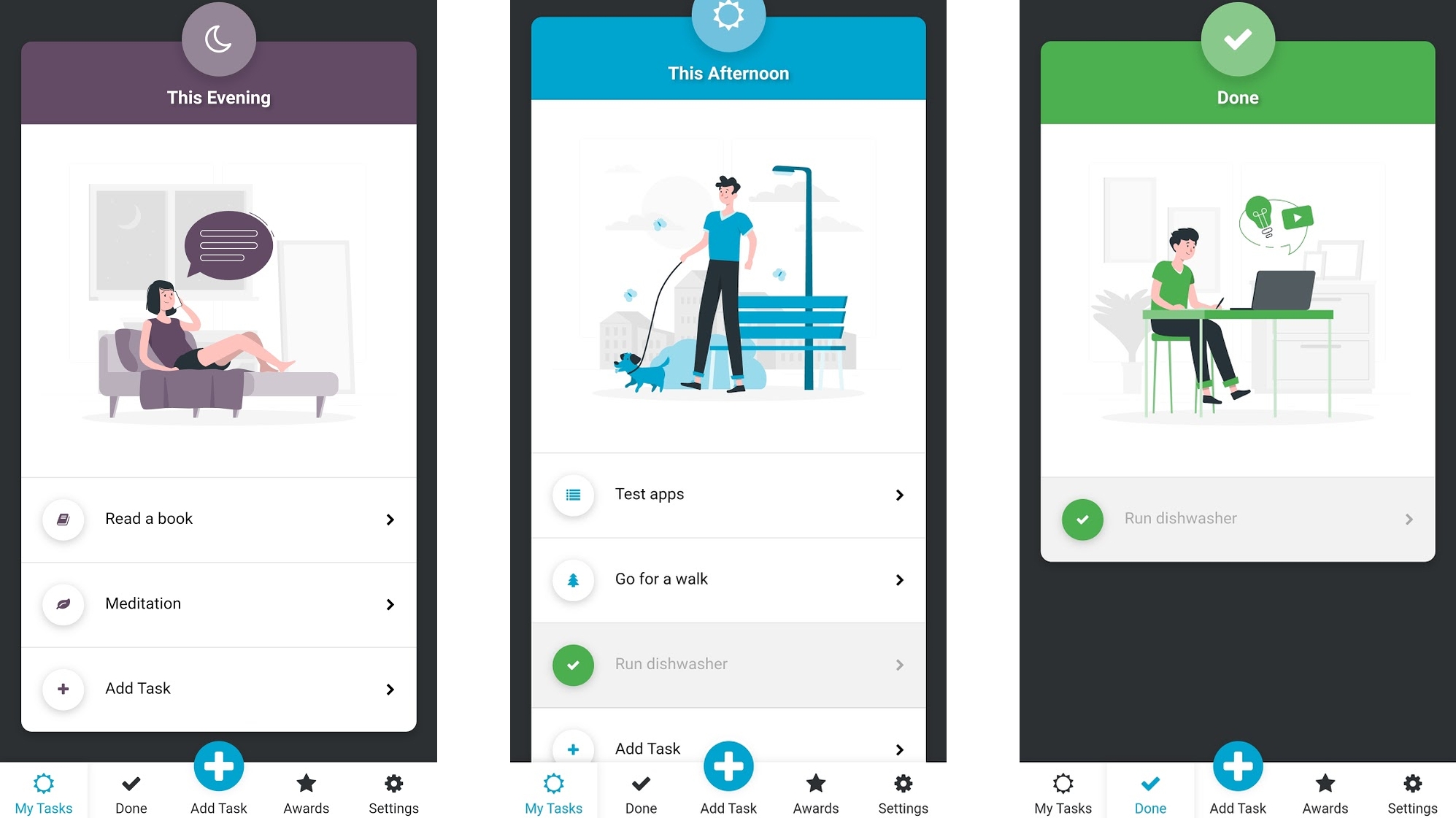
Just For Today – Daily Planner
Just For Today is in many ways much like any other to-do list app. You have a list of things that you want to do, the ability to add notes to tasks, and you can tick them off when they’re complete.
How it differs is that it keeps you in the present, as all of the tasks are just for the current day. In the morning it wipes the slate clean and you assign new tasks for the day ahead. The idea is to keep you from thinking or worrying about the future or the past, and there’s also an incentive to get things done that day – since if you don’t you’ll have to add them again tomorrow.
In this way, Just For Today could also help you build up routines and positive habits, since it requires you to take things one day at a time, and not just leave a task incomplete for weeks on end.
Just For Today is also attractively presented, and splits tasks into morning, afternoon, and evening sections, so your day has clear divisions. It won’t be for everyone, but if you find your to-do lists tend to get overwhelming then it could definitely be for you.
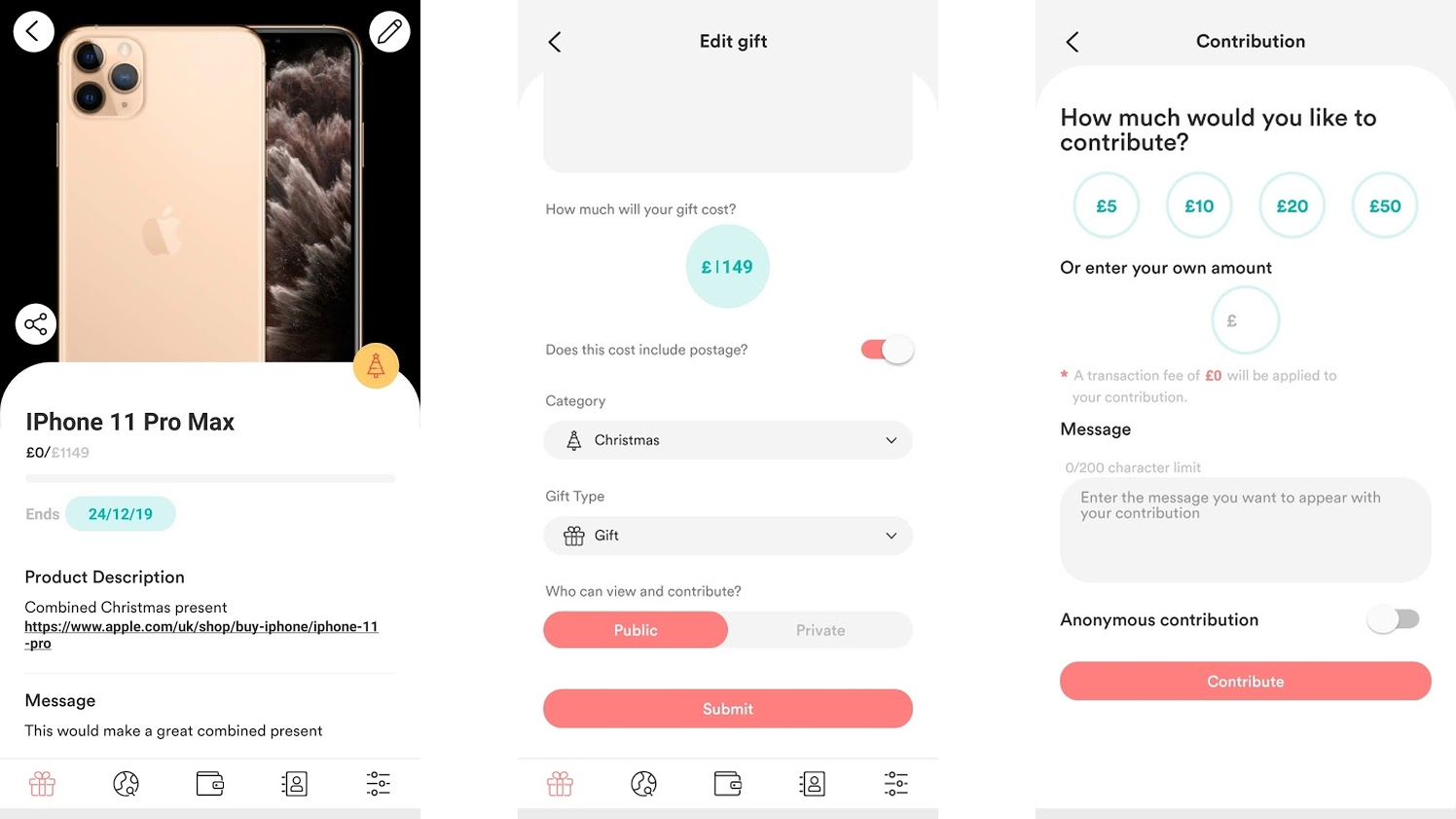
WhatWeWant
Some of the best gifts are expensive. That’s just a fact of life. But WhatWeWant provides an easy way for people to split the cost, so a group of friends or family can get a combined gift for someone.
You can start out by uploading information on a gift you’re hoping to raise funds for – whether it’s for you or someone else. This can include an image, description, URL, price, and what occasion the gift is for. Then you can share the listing with anyone you want using a link, or even make it visible to the general public, and from there people can start contributing.
Contributions are held in a secure account and can only be withdrawn once 75% of the gift cost has been raised, and while the focus is on gifts, you can also crowdfund other things, such as holidays and parties.
The app is slick and polished, and the only real downside is that it charges a small fee on each donation, but it has to make its money somewhere.
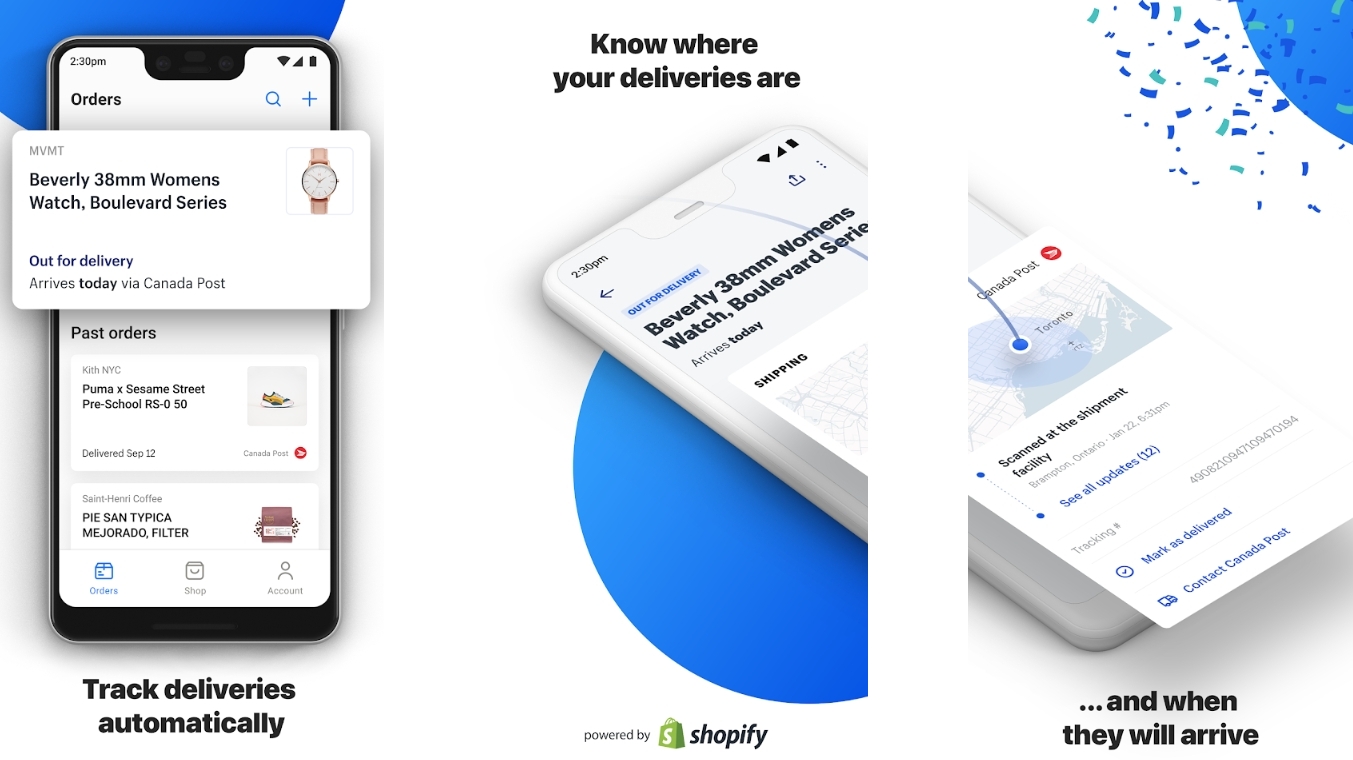
Arrive – Package Tracker
If you’re always ordering things online then Arrive – Package Tracker could become one of your favorite Android apps, as it lets you track all of your parcels, all in one place, and it can do so automatically.
Simply connect it to your Gmail account and Arrive will scan your inbox for anything you’ve ordered, adding tracking information to the Arrive app.
You can see more or less as much in the app as you can from a web browser, including live maps if the retailer offers them. You can also get a notification when a parcel has been delivered.
If you don’t have Gmail – or don’t always use it when placing orders – then Arrive is a little less useful, as while you can link other emails to it you have to manually enter tracking numbers for details to show in the app, whereas with Gmail the experience is seamless.
As such while it’s worth a try for any online shopping fanatics, it’s near essential for those who happen to use accounts linked to Gmail for said shopping.
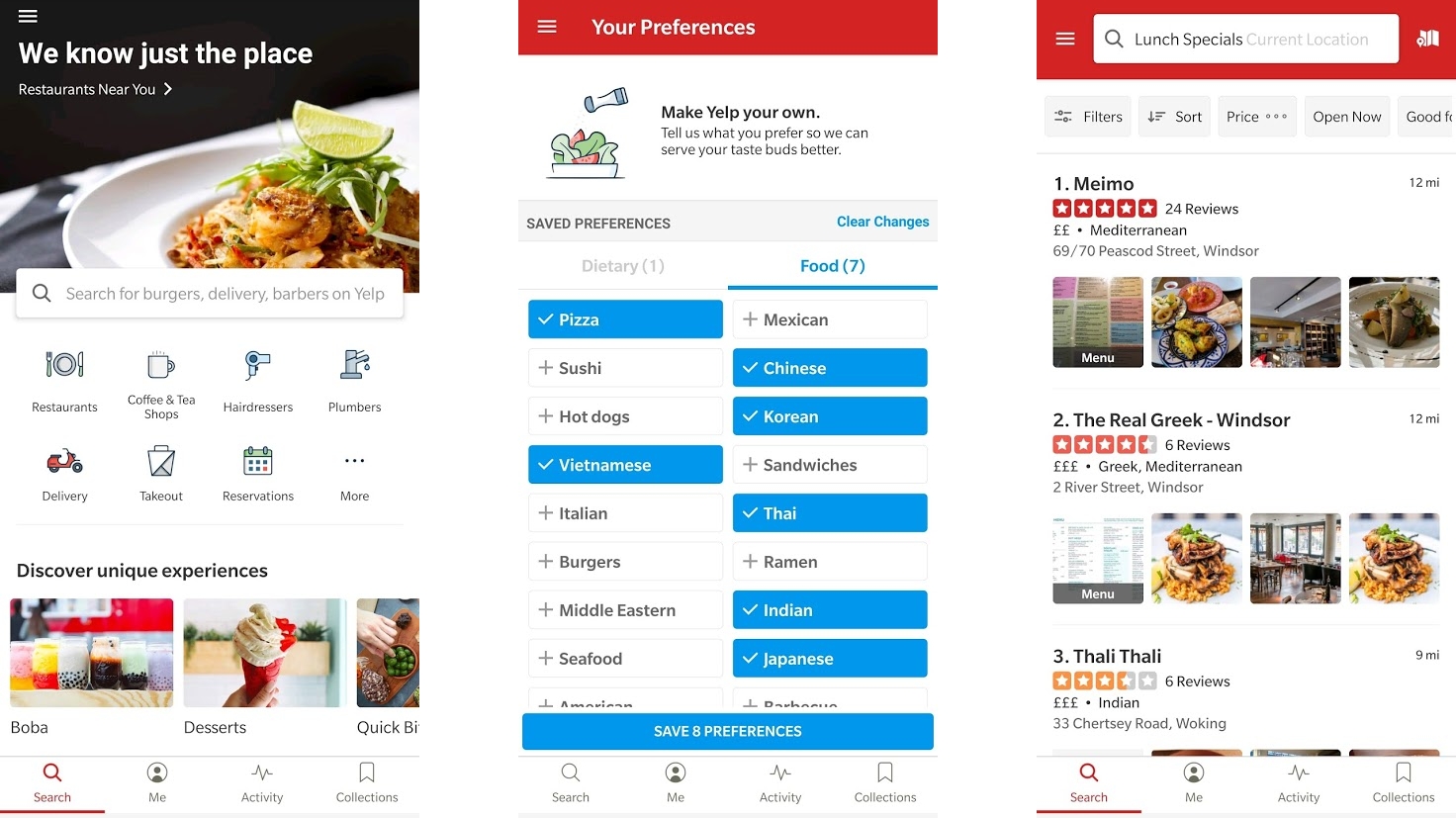
Yelp
Yelp can be seen as something of an alternative to Trip Advisor, but with a focus on food, shopping, and services, such as plumbers and hairdressers.
Like Trip Advisor it has been around for a long time, but the free Android app has continually improved, such as with the relatively recent addition of personalization, letting you pick your favorite types of cuisine from a fairly extensive list, along with any other dietary requirements and preferences, such as vegetarian or gluten-free.
This will affect the restaurants that are highlighted on your home screen and in search, but with or without these preferences you’ll be able to see and search for restaurants, bars, coffee shops, petrol stations, shopping, and more in your area.
Each listing includes pictures, user reviews, the address and website link, opening hours, and most other information you might want. You can of course also leave your own reviews and photos. In some cases you can even make reservations or order takeaway straight from the app, making this a great tool whether you plan to eat in or out.
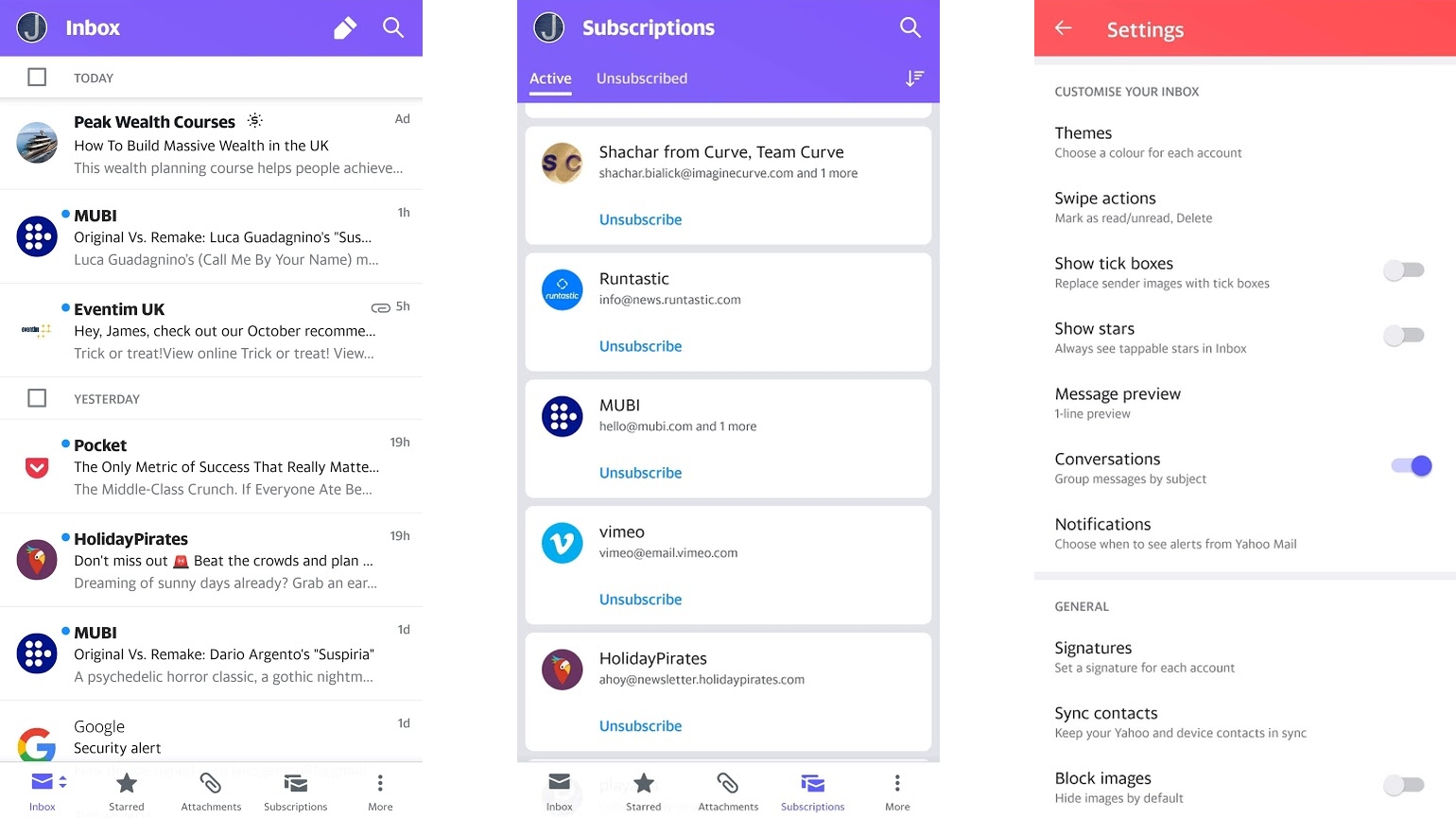
Yahoo Mail
Yahoo Mail is an email app but it doesn’t require you to use Yahoo’s email service, despite the name. In fact, you can link any other email account to it. If you link multiples you can easily keep them separate and even have different themes for each, and there’s plenty more here to help it stand head and shoulders above most other free email apps.
A real highlight of Yahoo Mail is its filters, letting you just see emails from people (as opposed to companies), or just see mailing lists you’re subscribed to (allowing you to quickly unsubscribe with just one tap), or just see attachments, travel documents, receipts, and other things.
Yahoo Mail also lets you add a PIN or fingerprint security and even customize what if any gesture controls you want active. So whatever you might think of Yahoo email, don’t overlook Yahoo Mail.
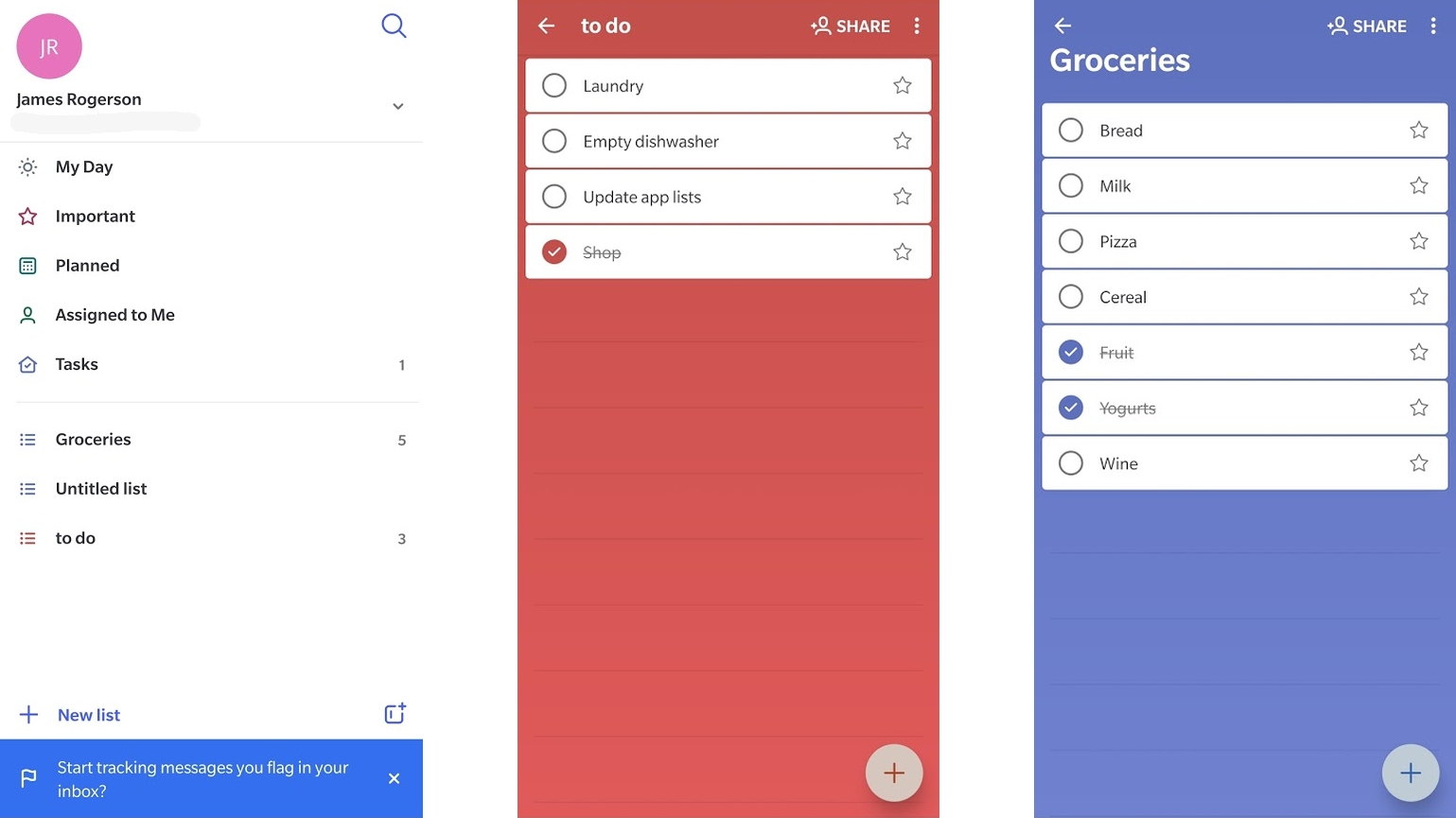
Microsoft To Do
There’s a huge number of free to-do list apps on Google Play, but very few that stand out. Microsoft To Do is one that manages to rise above the rest though.
The company aims to make this better than Wunderlist (which it also owns) and it has arguably achieved that. If not, it’s certainly close.
It took a while to reach this point, but now Microsoft To Do offers a polished, pretty interface that’s easy to navigate and feature-packed.
What sort of features, you ask? You can choose from numerous different sorting options for each list, decide whether or not to hide completed entries, tag important items as, well, important, customize the color scheme of each list individually, collaborate on lists, and more.
If that’s enough to tempt you away from Wunderlist, making the switch is painless as there’s the option to import your Wunderlist content.
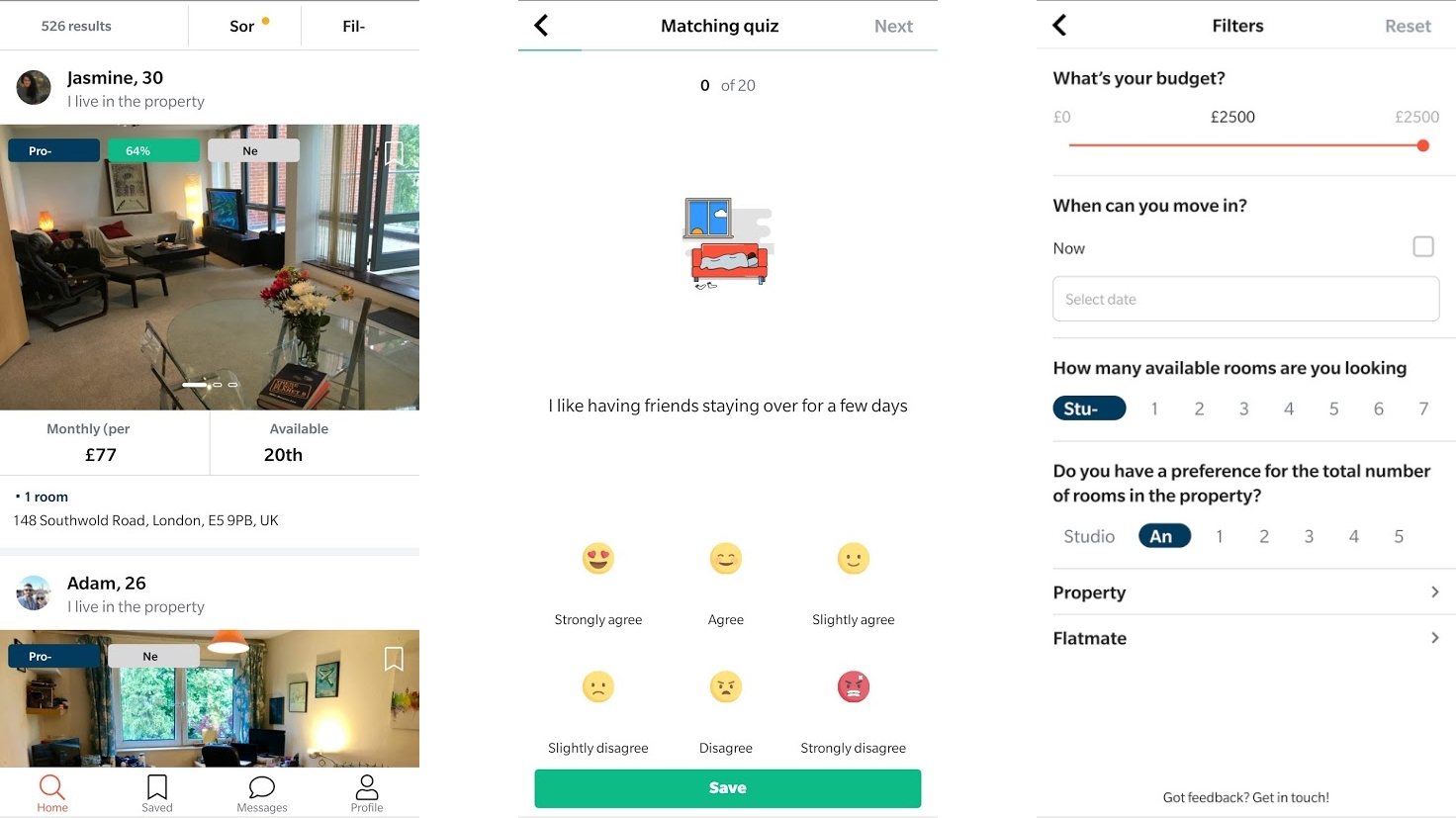
Ideal Flatmate
Ideal Flatmate is designed as a way to find, well, the ideal flatmate. Part of its appeal is a quiz you can take, answering questions about the type of flatmate you are and what you’re looking for in another flatmate. It will then match you with people who had similar results. In that sense it’s a bit closer to a dating app than a typical rental service.
You can also create a profile, filling in a bit more information about yourself and the sort of flatmate you’re looking for (such as ages and genders).
And if you don’t want to wait for the matches to roll in you can simply browse through available properties and message the landlord or potential flatmate if you’re interested.
You can also list your own property if you already have a place and are looking for a tenant. It seems like you have to do this from the Ideal Flatmate website at the time of writing, but once listed you can manage enquiries from the app.
The big issue with Ideal Flatmate is that it’s UK-only, and right now there’s a reasonable but not enormous number of listings, but now that there’s an app available it’s sure to grow in popularity.
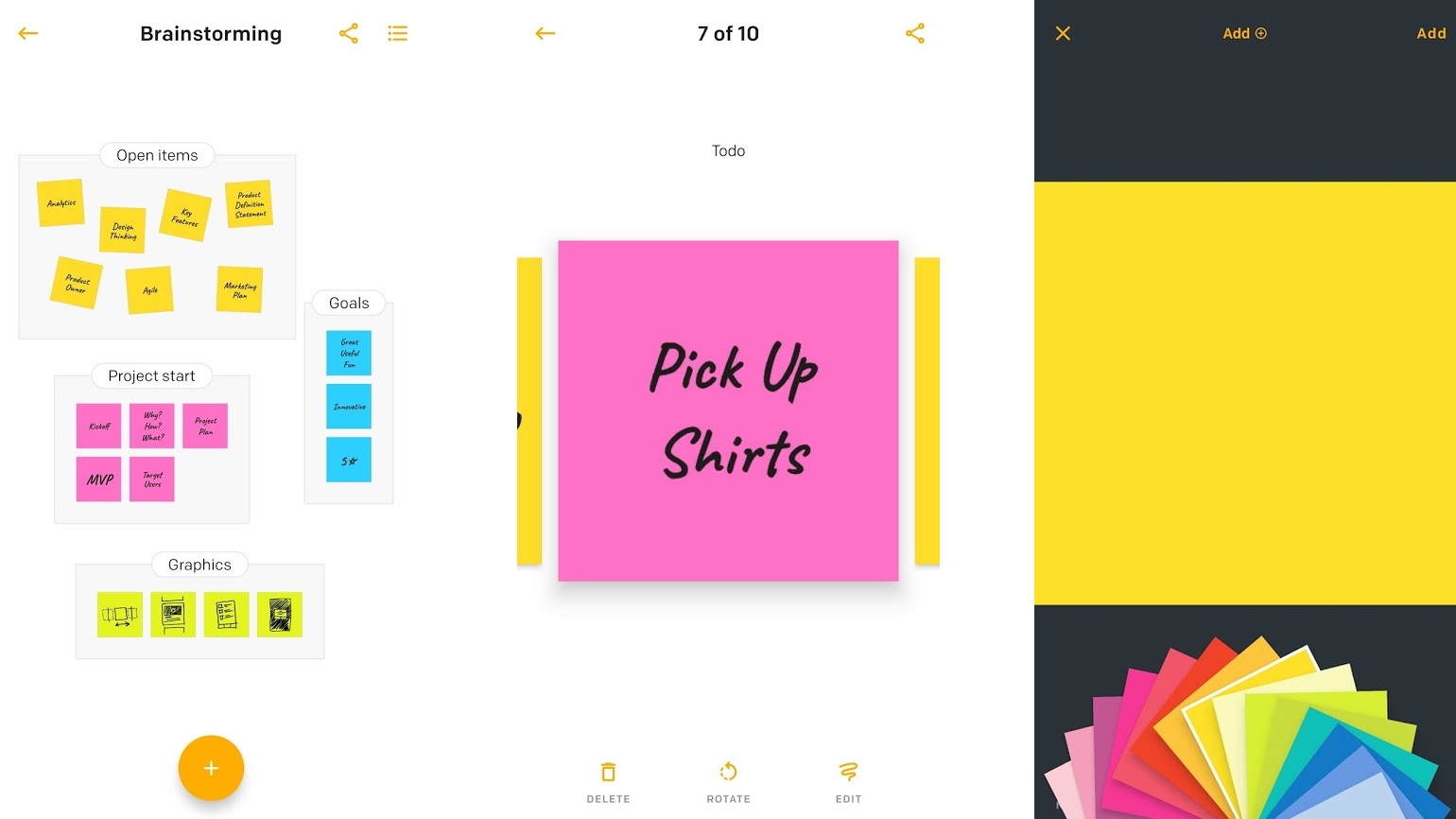
Post-it
Post-it essentially gives Post-it notes a digital upgrade, letting you create boards full of virtual Post-it notes on your Android device.
You can type a note, write one by hand, or sketch on one, give it a color, and add to a board (which you can also name). You can also take a photo of a physical note and add that to a board.
Notes can at any time be edited or moved between boards, making for a colorful to-do list and note-taking app.
Post-it is perhaps a bit fussier than many note-taking apps, but if you’re a fan of real-world Post-its then this is definitely worth a look, either as a replacement or supplement to them.
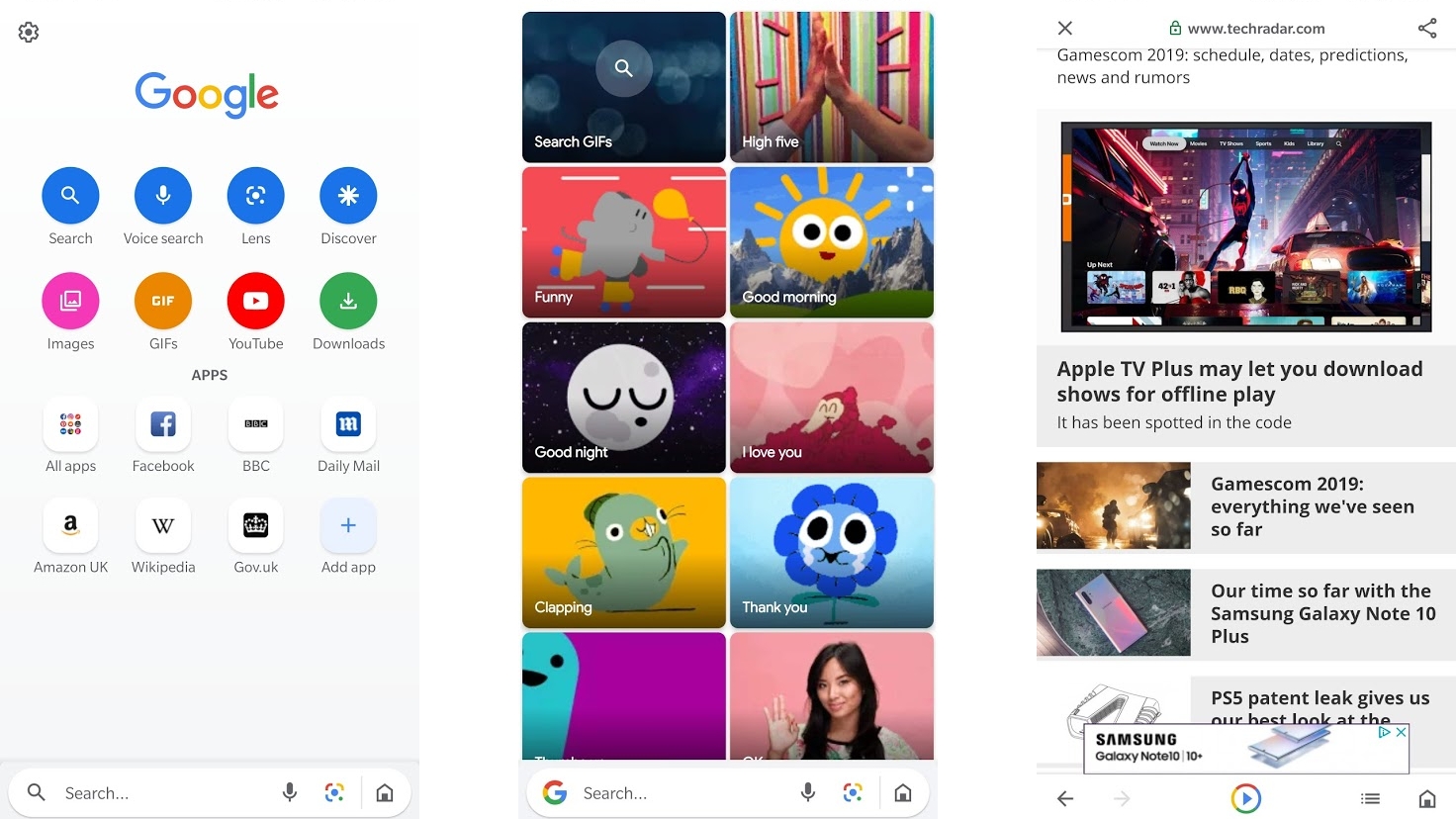
Google Go
If you ever find yourself running low on data before your monthly allowance refreshes, then Google Go could be for you. This free Android app is a lightweight alternative to Chrome and other browsers. And when we say lightweight, we really mean it – the app comes in at just 7MB in size, and it uses up to 40% less data than searching in other browsers.
It’s also designed to work fast even on slow connections, which could be handy if you’re in an area with poor coverage, or roaming abroad where speeds might not be as fast as at home.
And while it’s lightweight, it doesn’t lack features. You can search for GIFs, search with your voice, and even get information from Google Lens by taking a photo of something – take a photo of text, for example, and you can have it spoken aloud or translated.
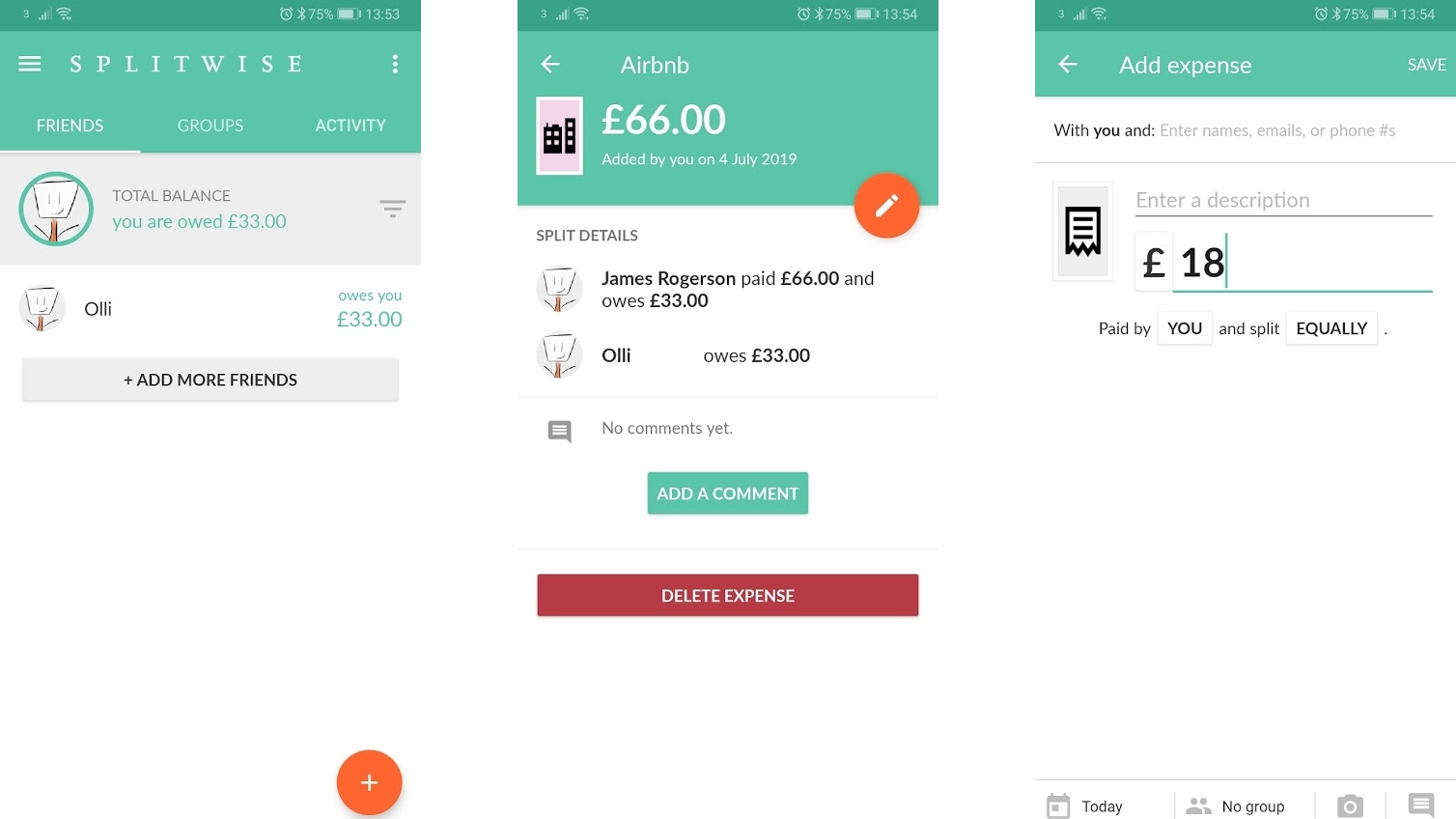
Splitwise
If you’re constantly splitting bills with friends, family, housemates, or anyone else, then Splitwise could simplify things. It’s designed for keeping a running total of who owes what. Just tell the app who paid, how much and how the bill should be divided, and the app will log who owes how much and to whom.
That’s useful, but it gets even more so after multiple transactions, as Splitwise will ensure the totals owed by and to each person account for all transactions.
This also means there’s potentially less stress to pay people back immediately – the total is always shown in the app, and if you subsequently pay for something, their share will be deducted from what you previously owed. So you can just keep a running total and settle up as frequently or rarely as you – and the people you’re splitting with – want.
In the US, Splitwise is even better, as you can make payments directly from the app using PayPal and Venmo integrations. Still, whatever country you’re in, it’s worth having.
Current page: The best free productivity apps for Android
Prev Page The best free office and writing apps for Android Next Page The best free security and customization apps for AndroidGet daily insight, inspiration and deals in your inbox
Sign up for breaking news, reviews, opinion, top tech deals, and more.
James is a freelance phones, tablets and wearables writer and sub-editor at TechRadar. He has a love for everything ‘smart’, from watches to lights, and can often be found arguing with AI assistants or drowning in the latest apps. James also contributes to 3G.co.uk, 4G.co.uk and 5G.co.uk and has written for T3, Digital Camera World, Clarity Media and others, with work on the web, in print and on TV.